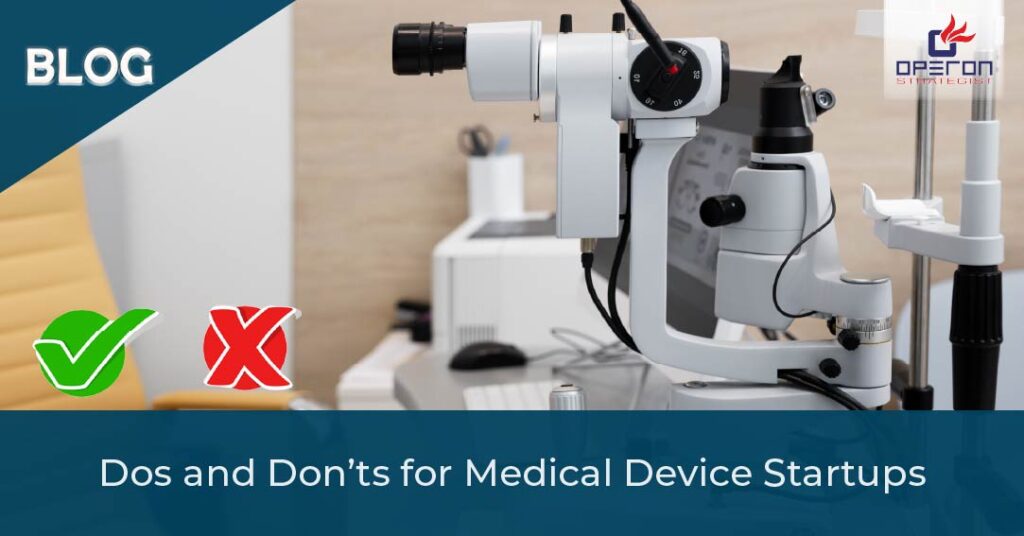
Building a medical device startup can be exciting, but also full of compliance hurdles. The road from concept to commercialization in the USA or any global market demands precision, planning, and regulatory awareness. Many startups with great ideas struggle—not because of weak technology, but because they miss key regulatory or documentation steps.
This guide breaks down the dos and don’ts for medical device startups so you can move faster, stay compliant, and build investor and customer trust from the start.
Why Medical Device Startups Struggle Early
The medical device industry is highly regulated. Startups must balance innovation with compliance, manage product development, validation, and clinical evaluations—all while keeping costs under control.
Common roadblocks include:
- Poor understanding of FDA 510(k) or CE Mark requirements
- Lack of design and risk management documentation
- Weak quality system implementation (QMS)
- Late engagement with regulatory experts
Avoiding these pitfalls can mean the difference between a successful product launch and a costly delay.
The Dos for Medical Device Startups
1. Do Start with a Regulatory Strategy
Before any prototype or product design, map your regulatory pathway. Identify if your device falls under Class I, II, or III and whether it needs FDA 510(k), De Novo, or PMA approval.
This will guide your testing, documentation, and time-to-market plan.
Tip: Involve a regulatory consultant early. A structured plan can save months of back-and-forth with the FDA.
2. Do Implement a Quality Management System (QMS) Early
A strong QMS ensures your processes are traceable, controlled, and audit-ready. For the USA, align your system with 21 CFR Part 820 (QSR). Globally, follow ISO 13485:2016.
A documented QMS also builds investor confidence and helps scale faster once you move beyond the prototype stage.
3. Do Conduct Proper Design Control and Risk Management
Document every stage of your design and development process. Under 21 CFR 820.30, you need clear records of user needs, design inputs, outputs, verification, and validation.
Combine this with ISO 14971 risk management practices to identify potential hazards and mitigation measures.
This step helps prevent product recalls, field failures, or non-conformances later.
4. Do Focus on Clinical and Performance Evaluation
Even if your device seems simple, regulators expect performance data or clinical validation. Collect objective evidence early. If you’re entering multiple markets, check local requirements—EU MDR and US FDA differ on clinical evidence expectations.
5. Do Plan for Scalability
Startups often focus on approval, not production. Design your processes with scalability in mind—cleanroom setup, component suppliers, and documentation templates should be scalable as demand grows.
Partner with experts who offer turnkey project consulting to handle setup, validation, and regulatory alignment under one plan.
The Don’ts for Medical Device Startups
1. Don’t Ignore Regulatory Classification
Guessing your device class or skipping pre-submission discussions with the FDA can delay approval by months.
Always confirm classification using FDA Product Codes or consult a 510(k) expert before you invest heavily in testing.
2. Don’t Start Without a Solid Documentation Plan
Regulators don’t just check your device—they check your records. Missing traceability, incomplete design history files (DHF), or poor supplier documentation are red flags during inspections.
Use structured document templates and cloud-based QMS tools to stay organized.
3. Don’t Overlook Usability and Human Factors Engineering
Even the most advanced devices can fail usability tests. Incorporate human factors engineering into your early design process. FDA expects usability validation as part of safety and performance.
4. Don’t Rush to Market Without Compliance Testing
Skipping biocompatibility, electrical safety (IEC 60601-1), or software validation tests might save time—but will cost you later.
Unapproved claims or incomplete test reports often trigger Additional Information (AI) requests from FDA reviewers, delaying clearance.
5. Don’t Do It All Alone
Regulatory frameworks keep changing. Trying to manage everything internally can stretch your team thin.
Engage experts who specialize in FDA submissions, ISO certification, and turnkey manufacturing support. They can help you navigate documentation, audits, and validations faster and cleaner.
Building a Roadmap for Growth
Once your first product reaches the market, your compliance journey doesn’t stop. FDA expects post-market surveillance, complaint handling, and CAPA management. A well-maintained QMS helps you stay audit-ready at all times.
Also, think globally. If you plan to enter the EU, UK, or India, ensure your regulatory strategy includes CE Marking, UKCA marking, or CDSCO registration. Harmonizing documentation early reduces duplication later.
Why This Matters for Investors and Partners
Investors are cautious about medical device startups with weak compliance frameworks. A startup that can show FDA readiness, clear documentation, and QMS alignment earns faster trust and funding.
Having a clear path to 510(k) clearance, ISO 13485 certification, or MDSAP readiness can be your strongest pitch to both investors and strategic partners.
Need help setting up your quality system or regulatory strategy?
How Operon Strategist Can Help
If you’re building a medical device startup in the USA or globally, Operon Strategist can guide you through every stage—from regulatory planning and QMS setup to FDA submission and turnkey facility design.
Our consultants specialize in:
- FDA 510(k) submission and documentation
- ISO 13485 and QSR implementation
- Design control and risk management
- Cleanroom and manufacturing setup
- End-to-end regulatory compliance consulting
With our support, you can bring your device to market faster and stay compliant across multiple regions.
Ready to Get Started?
If you’re serious about launching your medical device startup the right way, don’t leave compliance to chance.
Contact Operon Strategist today to discuss your project and get expert guidance on FDA and global regulatory requirements.
